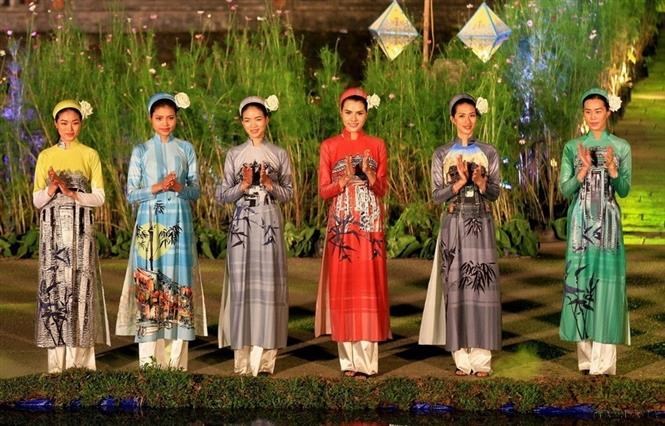-

Nha Nhac meaning “elegant music” refers to a broad range of musical and dance styles performed at the Vietnamese royal court from the fifteenth to the mid-twentieth century. Nha Nhac, which was recognized by UNESCO as an Intangible Cultural Heritage of Humanity, generally features at the opening and closing of ceremonies associated with anniversaries, celebrations, religious holidays, coronations, funerals, and official receptions. (Photo: VNA)
-

-

Ca tru, also known as hat co đau or hat noi, is a Vietnamese genre of musical storytelling performed by a featuring female vocalist, with origins in northern Vietnam. For much of its history, it was associated with a pansori-like form of entertainment, which combined entertaining wealthy people as well as performing religious songs for the royal court. Ca trù is inscribed on the List of Intangible Cultural Heritage in Need of Urgent Safeguarding in 2009. (Photo: VNA)
-

Quan ho singing is a Vietnamese folk music style characterized both by its antiphonal nature, with alternating groups of female and male singers issuing musical challenges and responses. Quan ho is common in rituals and festivals, and a common theme in many songs is love and sentimentality as experienced by young adults. Quan họ was recognised as a UNESCO Intangible Cultural Heritage practice in 2009. (Photo: VNA)
-

The dan bau, also called “doc huyen cam – one-string zither”, is a Vietnamese stringed instrument, in the form of a monochord (one-string) zither. In the photo: DPRK leader Kim Jong-un (3rd from R) plays the dan bau in Vietnam on March 1, 2019. (Photo: VNA)
-

In the Highlands region, playing the gongs electrifies the people participating in dances and other forms of entertainment. Gongs have been an integral part of the spiritual life of many ethnic groups in Vietnam. (Photo: VNA)
-

Ao dai (Vietnamese traditional long dress) has long been a traditional costume and a typical cultural feature of Vietnam. Through ups and downs with constant changes, ao dai still honours the gracefulness and elegance of Vietnamese women. (Photo: VNA)
-

Brocade is an indispensable hand-woven product in the ethnic communities of Tay, Dao, H’mong, and Pa Then in Tuyen Quang Province. Thanks to the women’s finesse, brocade is woven into many typical products such as traditional costumes, hats, headgears, wallets, bags, pillows and blankets. (Photo: VNA)
-

Elephant Race Festival Daklak takes place in springtime, normally in the third lunar month in Buon Don District, Dak Lak Province. It reflects the martial spirit of the M’Nong people in the Central Highlands of Vietnam. (Photo: VNA)
Building Vietnamese culture and people towards sustainable development
The National Culture Conference which opened on November 24 is set to inspire the entire people’s aspiration for fast and sustainable national development. The event, which marks the 75th year since the first National Culture Conference was held on November 24, 1946, is a step to implement the culture-related content in the Resolution of the 13th National Party Congress.



